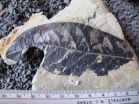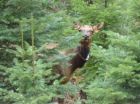(Press-News.org) WASHINGTON, Oct. 21 – A team of scientists at Alcatel-Lucent Bell Labs have examined the energy consumption trends of communications equipment in use today and determined that gains in energy efficiency are not keeping pace with traffic growth. One consequence is that energy is going to become an increasingly important problem for communication networks.
In one unabated, business-as-usual scenario, the scientists estimate that power consumed per user could increase by seven-fold over the next 10 years. Based on these findings, Bell Labs has developed several technology evolution scenarios for the coming decade, which they will present at Frontiers in Optics (FiO) 2010/Laser Science XXVI -- the 94th annual meeting of the Optical Society (OSA), which is being held together with the annual meeting of the American Physical Society (APS) Division of Laser Science at the Rochester Riverside Convention Center in Rochester, N.Y., from Oct. 24-28.
"Traffic growth predictions are a key part of this and we took a novel approach in which we extrapolated the North American backbone network traffic growth rate forward, rather than the traffic itself," explains Dan Kilper, member of the technical staff at Bell Labs and chair of the GreenTouch Technical Committee. "In this way we accounted for the gradual slowing of traffic growth, which is expected as the number of users saturates. Even taking this into account, the growth rate is expected to drop from the current 40 to 60 percent today down to somewhere in the range of 25 to 50 percent in 2020."
This number is important because the scientists' study of network equipment indicates that recent efficiency improvement rates of 20 percent per year are falling to roughly 10 percent. "Our findings also showed that optical transmission gear consumes more than a factor of 10 less than other network technologies such as cellular base stations and packet routers," says Kilper.
These findings, along with recent research from other groups worldwide, were the impetus for establishing the GreenTouch Consortium , which is comprised of industrial, academic and non-governmental research experts who are dedicated to fundamentally transforming communications and data networks, including the Internet, and significantly reducing the carbon footprint of information and communications technology devices, platforms and networks.
The talk, "Optical Transmission Energy Consumption in the Internet" is at 8:30 a.m. on Tuesday, Oct. 26, 2010.
INFORMATION:
About the Meeting
Frontiers in Optics 2010 is OSA's 94th Annual Meeting and is being held together with Laser Science XXVI, the annual meeting of the American Physical Society (APS) Division of Laser Science (DLS). The two meetings unite the OSA and APS communities for five days of quality, cutting-edge presentations, fascinating invited speakers and a variety of special events spanning a broad range of topics in physics, biology and chemistry. FiO 2010 will also offer a number of Short Courses designed to increase participants' knowledge of a specific subject while offering the experience of insightful teachers. An exhibit floor featuring leading optics companies will further enhance the meeting.
Useful Links:
Meeting home page
http://www.frontiersinoptics.com/
Conference program
http://www.frontiersinoptics.com/ConferenceProgram/default.aspx
Searchable abstracts
http://www.abstractsonline.com/viewer/?mkey=%7BD58D07D1%2D61B6%2D42D6%2D8819%2DFCF66F28A08B%7D
EDITOR'S NOTE: A Press Room for credentialed press and analysts will be located in Aqueduct AB of the Rochester Riverside Convention Center, Sunday through Thursday. Those interested in obtaining a press badge for FiO should contact OSA's Lyndsay Basista at +1 202.416.1930 or lbasista@osa.org.
About OSA
Uniting more than 106,000 professionals from 134 countries, the Optical Society (OSA) brings together the global optics community through its programs and initiatives. Since 1916 OSA has worked to advance the common interests of the field, providing educational resources to the scientists, engineers and business leaders who work in the field by promoting the science of light and the advanced technologies made possible by optics and photonics. OSA publications, events, technical groups and programs foster optics knowledge and scientific collaboration among all those with an interest in optics and photonics. For more information, visit www.osa.org.
LA JOLLA, CA, October 21, 2010 — A multi-institutional consortium led by The Scripps Research Institute scientists, the Joint Center for Structural Genomics (JCSG), is the sole focus of a special issue of the journal Acta Crystallographica Section F. This is the first time in the history of the monthly journal, which publishes peer-reviewed crystallography and structural biology articles, that an entire issue is devoted to the works of a single scientific center.
The issue contains 35 articles grouped into sections that highlight different aspects of the JCSG high-throughput ...
CORAL GABLES, FL (October 21, 2010)--Researchers from the University of Miami (UM) and the University of Connecticut (UConn) have published a 2010 report on the American Jewish population, as part of a new North American Jewish Data Bank Report series.
The new report called Jewish Population in the United States-2010 shows a greater number of Jews in the U.S. than in Israel. While the article puts the total number of Jews in the U.S. at around 6.5 million, the authors recognize there may be some double counting in the methodology and believe the number to be fewer than ...
The landscape of Central Africa 65 million years ago was a low-elevation tropical belt, but the jury is still out on whether the region's mammals browsed and hunted beneath the canopy of a lush rainforest.
The scientific evidence for a tropical rainforest at that time is weak and far from convincing, says paleobotanist Bonnie F. Jacobs at Southern Methodist University in Dallas.
Fossil pollen from Central and West Africa provide no definitive evidence for communities of rainforest trees at the beginning of the Cenozoic, says Jacobs, an expert in the paleobotany of Africa ...
The availability of highly nutritious forage is one of four factors linked to the presence of elk populations in western Oregon and Washington, according to a modeling study recently completed by scientists from the U.S. Forest Service's Pacific Northwest (PNW) Research Station. Findings from the two-year study will be used to update land management planning for the ecologically and economically important ungulate in the region.
"Habitat models like the one we developed are critical to managing elk populations, particularly since current management practices are based ...
OAK RIDGE, Tenn., Oct. 21, 2010 -- Tin may seem like the most unassuming of elements, but experiments performed at the Department of Energy's Oak Ridge National Laboratory are yielding surprising properties in extremely short-lived isotopes near tin-100's "doubly magic" nucleus.
Experiments performed with the exotic nucleus tin-101, which has a single neutron orbiting tin-100's closed shell of 50 protons and 50 neutrons, indicate an unexpected reversal in the ordering of lowest states in the nucleus. The finding appears to violate a standard scenario offered by the nuclear ...
Boston, Mass. - A cholesterol-lowering drug reduced the enlarged prostates of hamsters to the same extent as a drug commonly used to treat benign prostatic hyperplasia (BPH), report researchers at Children's Hospital Boston and their colleagues in the October issue of the Journal of Urology. Together, the drugs worked even better.
"We don't know the mechanism, but the results suggest to us that lowering cholesterol has the potential to reduce BPH in men," says senior author Keith Solomon, PhD, a biochemist, and member of the departments of Orthopaedic Surgery and Urology ...
At the heart of the method is a so-called quantum point contact (QPC). This is a narrow conductive channel in a semiconductor circuit. The scientists created a 70-nanometer narrow channel, about as wide as the wavelength of electrons in the semiconductor. The key is that only one electron at a time will fit through the channel, making possible extremely high-precision measurements of the electric current. As described in the current publication, this method was applied to photogenerated electrons for the first time ever.
In the experimental set-up it is not the sun, but ...
Beating the flu has always been tough, but it has gotten even more difficult in recent years. Two of the four antiviral drugs used to treat a nasty case of the influenza A virus no longer work.
Fortunately, scientists at the National High Magnetic Field Laboratory and Institute of Molecular Biophysics at Florida State University and researchers at Brigham Young University in Utah are close to understanding why these drugs have become less effective — and how new drugs might take their place. Their findings appear this week in the journal Science.
"Resistance to drugs ...
Madison, WI, October 21, 2010 – Researchers at the University of Florida Research and Education Centers and scientists at the South Florida Water Management District have published a report regarding the trends in water quality feeding into Everglades National Park. The report can be found in the September-October 2010 Journal of Environmental Quality, published by the American Society of Agronomy, the Crop Science Society of America, and the Soil Science Society of America.
The goal of the study was to provide insight regarding the variations in the quality of water ...
Two children, both age 3, enroll in publicly funded preschool. But they may have vastly different experiences: One child may attend preschool for 8 hours a day and be taught by a teacher with a bachelor's degree while the other child may be in preschool for only a few hours a day, under the supervision of a teacher with a 2-year degree. Why is there so much variability and are these programs meeting their potential for adequately preparing youngsters for school?
In a new report in Psychological Science in the Public Interest, a journal of the Association for Psychological ...


